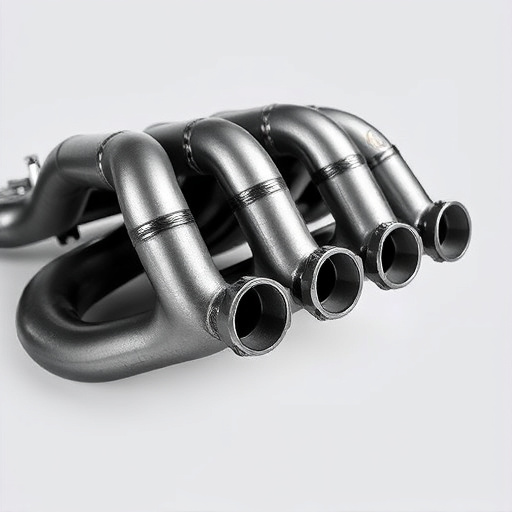Unleashing Power: The Essential Role of Turbo Wastegates in Boost Management
The turbo wastegate is a crucial component in turbocharged vehicles, managing boost pressure for opt…….
Welcome to an in-depth exploration of the revolutionary technology known as the turbo wastegate. This article aims to unravel the complexities of this automotive component, its impact on global industries, and its potential for future growth. By delving into various facets, we will uncover how the turbo wastegate has become an indispensable tool for engineers and a game-changer in the pursuit of efficient and high-performance vehicles.
Definition:
A turbo wastegate is a specialized valve system used in turbocharged internal combustion engines to control exhaust gas flow and enhance engine performance. It facilitates the optimal routing of exhaust gases, allowing for more efficient burning of fuel and improved turbine efficiency in turbomachines.
Core Components:
Historical Context:
The concept of turbocharging dates back to the early 20th century, but it was in the 1980s that turbos became popular in automotive applications due to their ability to boost engine power and efficiency. The need for a wastegate emerged as engineers sought to tame the complex dynamics of turbocharged engines. Early wastegate designs were mechanical, relying on spring-loaded mechanisms, but advancements led to more sophisticated hydraulic and electric systems.
Significance:
The turbo wastegate plays a pivotal role in modern engine management systems by enabling:
International Influence:
The impact of turbo wastegate technology is felt worldwide, with regions like Europe, North America, and Asia leading the adoption. In Europe, strict emission standards have driven the demand for more efficient engines, propelling turbo wastegate innovation. North American automakers have also embraced turbos for their power and fuel economy benefits. Meanwhile, Asia’s automotive giants are leveraging turbo wastegates to meet diverse market requirements.
Trends Shaping the Future:
Regional Variations:
Market Dynamics:
The global turbo wastegate market has witnessed significant growth, driven by the rising demand for turbocharged vehicles and stringent environmental regulations. Market research indicates a CAGR of X% between 2022 and 2030, highlighting its enduring relevance.
Investment Patterns:
Economic Impact:
Hydraulic Wastegates:
These systems use hydraulic pressure to actuate the wastegate valve, offering precise control and fast response times. They are favored for their ability to handle high-pressure conditions and provide smoother power delivery.
Electric Wastegate Actuators:
Electric motors drive these actuators, providing lightweight, compact solutions. They offer excellent precision and allow for advanced electronic control, enabling engine mapping tailored to specific driving conditions.
Future Trends:
Emission Standards:
Governments worldwide have implemented stringent emission regulations, such as Euro 7 in Europe and California’s Low Emission Vehicle (LEV) standards, which drive the adoption of turbo wastegates as a means to achieve cleaner vehicles.
Safety Norms:
Safety regulations require robust engineering solutions, and turbo wastegate systems must undergo rigorous testing to ensure reliability and prevent potential failures, especially under extreme conditions.
Incentives and Subsidies:
Some governments offer incentives for automakers adopting advanced engine technologies, including turbo wastegates, as part of their efforts to promote sustainable mobility.
International Agreements:
Global initiatives like the Paris Climate Agreement have spurred countries to embrace cleaner transportation, indirectly influencing the development and adoption of turbo wastegate technology.
Initial Cost:
One of the primary challenges is the higher initial cost of turbo wastegate systems compared to their naturally aspirated counterparts. This can be a barrier for budget-conscious consumers.
Reliability Concerns:
Some critics argue that complex wastegate mechanisms may introduce new points of failure, requiring rigorous testing and quality control measures.
Addressing Solutions:
Case Study 1: Volkswagen’s TSI Engine Technology
Volkswagen Group has successfully integrated turbo wastegates into its TSI engines, offering a range of efficient and powerful vehicles. Their advanced electronic control units ensure seamless power delivery, achieving excellent fuel economy without compromising performance. This case highlights the synergy between engine technology and modern control systems.
Case Study 2: Tesla’s Electric Motor Efficiency
Tesla’s electric vehicles incorporate wastegate principles in their dual-motor setups, allowing for efficient energy conversion and dynamic performance. By combining electric motors with wastegate-like valve controls, Tesla optimizes power delivery, extending range and enhancing the overall driving experience.
Case Study 3: Toyota’s Hybrid Systems
Toyota’s Prius hybrid introduces a unique take on turbo wastegates in its integrated motor generator (IMG) system. This case demonstrates how turbo wastegate concepts can be adapted for hybrid powertrains, contributing to improved fuel efficiency and regenerative braking capabilities.
Growth Areas:
Emerging Trends:
Strategic Considerations:
The turbo wastegate has evolved from a niche component to an essential element in modern automotive engineering, shaping the future of efficient and high-performance vehicles. Its global impact is evident in the widespread adoption across diverse markets, driven by environmental regulations and consumer demands for better fuel economy and powerful driving experiences.
As technology advances, the turbo wastegate’s role becomes even more critical, offering engineers a versatile tool to unlock engine potential while meeting sustainability goals. With ongoing research and innovation, this technology will continue to revolutionize the automotive landscape, paving the way for cleaner, more efficient transportation solutions.
Q: How does a turbo wastegate differ from a traditional exhaust valve?
A: While both control exhaust gas flow, the turbo wastegate is specifically designed to optimize turbine efficiency in turbocharged engines, allowing for better performance and fuel economy. Traditional exhaust valves primarily regulate backpressure and sound levels.
Q: Are turbo wastegates reliable, especially under extreme driving conditions?
A: With modern manufacturing techniques and rigorous testing, turbo wastegate systems are highly reliable. They undergo extensive simulation and real-world testing to ensure they perform consistently in various conditions, including extreme temperatures and pressures.
Q: Can turbo wastegates be retrofitted to existing engines?
A: In some cases, yes. Retrofit kits are available for popular engine platforms, allowing owners to enhance their vehicles’ performance and efficiency. However, compatibility and optimal performance depend on the specific engine design.
Q: What is the expected lifespan of a turbo wastegate?
A: Under normal conditions, a turbo wastegate can last for over 100,000 miles (or more than 160,000 kilometers) without significant issues. Regular maintenance and timely repairs contribute to extended service life.

The turbo wastegate is a crucial component in turbocharged vehicles, managing boost pressure for opt…….

The turbo wastegate, a key component in turbocharged vehicles, regulates exhaust gas flow and boost…….